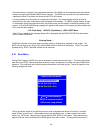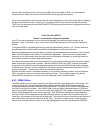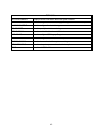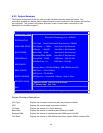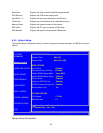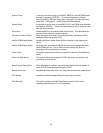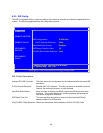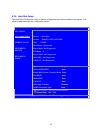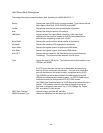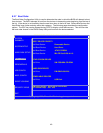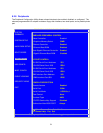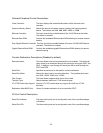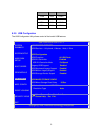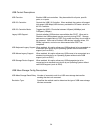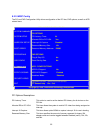48
Hard Drive Setup Descriptions
The configuration options described below work identically for HARD DRIVES 0 - 3.
Device: Displays the type of IDE device currently installed. Type choices include
Not Installed, Hard Disk, ATAPI CDROM, and ARMD.
Vendor: Displays the manufacturer device identification information.
Size: Displays the storage capacity of the device.
LBA Mode: Displays support for Logical Block Accessing. LBA uses 28-bit
addressing of the hard disk instead of CHS (Cylinder/Head/Sector)
addressing for supporting drives up to 137GB.
Block Mode: Displays the maximum Block Mode transfer for the device.
PIO Mode: Displays the maximum PIO supported by the device.
Async DMA: Displays the highest support Asynchronous DMA Mode.
Ultra DMA: Displays the highest support Synchronous DMA Mode.
S.M.A.R.T.: Displays device support for Self-Monitoring Analysis and Reporting
Technology. This protocol allows detection of drive errors.
Type: Selects the type of IDE device. Type choices include Not Installed, Auto,
CDROM, and ARMD.
If AUTO type is selected, the hard drive parameters are read during
boot-up, and are configured automatically. The hard drive information,
such as manufacturer and model number, is displayed during POST.
The CDROM type will enable bootable CD-ROM support for an IDE
CDROM drive attached as a master or slave. An IDE CD-ROM can be
made the boot device through the BOOT OPTIONS screen.
The ARMD type is selected when an ATAPI Removable Media Device is
present. This includes drives for high capacity floppies that can be
formatted as floppies or hard disks, e.g., LS120, IOMega Zip, Fujitsu
MO, and certain FLASH devices.
32BIT Data Transfer: Controls support for 32Bit IDE transfers.
ARMD Emulation Type: Selects the ARMD device emulation type by BIOS.



